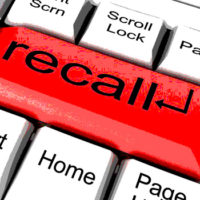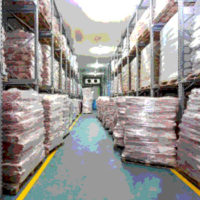For more than a decade, European authorities and producers have been held to higher standards for food quality than any other region worldwide, and the results have matched the regulation: Europe has one of the lowest levels of food contamination in the world.
What makes Europe’s success so remarkable is how complex the system is: Despite strict regulations enforced to protect more than 500 million people, compliance takes place without interfering with the independence of the EU’s 27 sovereign nations. Such a structure would be impossible without a massive technology infrastructure and investment in state-of-the-art data management technologies, including laboratory information management systems (LIMS), which are widely used by industry and governments to structure laboratory sampling, analysis and reporting tasks, and integrate food quality data across vast enterprise systems.
What Makes Europe Different?
Europe hasn’t always been the world standard for food safety. Several food crises, including outbreaks of mad cow disease (formally known as bovine spongiform encephalopathy or BSE), Salmonella and botulism, led to the establishment of the European Food Safety Authority (EFSA) in 2002. The organization’s mission is straightforward, but ambitious: “to deliver independent, high-quality and timely scientific advice on risks in the food chain from farm to fork in an integrated manner and to communicate on those risks in an open manner to all interested parties and the public at large.”
If achieving this goal wasn’t challenging enough, EFSA must do all this while respecting the sovereignty of the EU’s member states. The dramatic rise in international trade over the last 20 years, coupled with increasingly complex supply chains in food manufacturing, means that new rules must be all-encompassing without being stifling. While Europe needed stricter regulations in 2002, EFSA had to promulgate them in concert with the food safety authorities of individual nations within the EU.
The same law that established EFSA – Regulation EC/178/2002 – laid the groundwork for implementation guidelines, principles and procedures. For example, any food produced in Europe or imported is now subject to some of the strictest traceability requirements in the world. The regulation requires that manufacturers and distributers have “the ability to trace and follow food, feed, and ingredients through all stages of production, processing and distribution.”
To date, EFSA’s massive undertaking is working. The organization cooperates with more than 400 organizations within the EU to carry out food testing, and since 2002, EFSA has published more than 2,500 “scientific outputs”—pieces of research used to institute new regulations or modify existing rules. The number of cases of BSE has fallen from thousands each year before the institution of EFSA to only 44 in 2010, and now only two percent of EU residents consider mad cow to be a possible food risk. Salmonella contamination has fallen off even more dramatically, decreasing by 50 percent from 2004 to 2009.
One of the key contributors to successful monitoring of food safety “from farm to fork” is the application of consistent practices to the laboratory environment. Since 2010, EFSA has required that laboratories generating data that will be used as a part of any traceability record must be accredited under the ISO/IEC Standard 17025, which demands that labs keep records not just of the samples tested and their results, but of supporting data such as instrument calibration status, staff training records, reagents and standards, etc. Having this universal accreditation requirement for all food-related analysis means that it is possible to compare data sets from different sources, which in turn leads to faster and more accurate monitoring of food-related incidents that may impact EU citizens.
LIMS Plays a Starring Role
As well thought-out as the EFSA approach is, the system would be impossible to administer without sophisticated data management, like today’s enterprise-level LIMS. From 400 independent organizations, individual manufacturers and national authorities within the member states to the EFSA itself, the massive sampling operation hinges on consistent, reliable laboratory testing, management and integration. LIMS monitor instrument calibration and maintenance schedules, ensure proper training records for personnel, manage workflow and testing requirements inside labs and store all records related to sample testing and report generation. A LIMS also provides a secure data management environment for monitoring batch relationships between raw materials, processed materials and packaged goods in an increasingly complex food supply chain. Having a LIMS also ensures that the external accreditation program for ISO 17025 is significantly less burdensome for the laboratory by having online searchable access to supporting records—something that is both time consuming and tricky if the data is kept as paper records.
Across many individual labs, LIMS aggregate and analyze the massive data sets from throughout Europe, helping authorities identify potential outbreaks before they happen. Consider the Department of Agriculture in Ireland, where agrifood remains one of the country’s most important industries, accounting directly for more than eight percent of both GDP and employment and exports of more than €8.1 billion.
These Irish Department of Agriculture’s duties require timely and accurate flow of information and research results across all locations, and the Irish Department of Agriculture uses Thermo Scientific LIMS to ensure accuracy and gather new epidemiological insights. The solution allows for improved sample tracking through automated label generation and electronic transfer of data to third parties, including European authorities. The ability of the LIMS to retrieve, analyze and report data – with speed and efficiency impossible in a paper-based system—also allows authorities to use the system as a database for animal disease surveillance. This information is ultimately compiled with data from across Europe to model potential trends and prevent contamination issues before they become serious.
Conclusion
Whatever happens with the Food Safety Modernization Act in 2013, leading food and beverage brands can look to experience in Europe for guidance. After all, many manufacturers globally are already complying with the strictest food testing regulations in the world because they’re distributing in Europe. And while Europe’s regulations are indeed stringent—from traceability to handling and so much more—they are also best practices that help food companies protect their brand reputations by offering a product that is uniform in quality, safety and taste every time.
Adopting best practices and achieving compliance isn’t simple, but it’s far easier today thanks to the advancing technology of today’s LIMS. Navigating and thriving in a system as complex as EFSA’s requires more than instinct and hands-on experience. With LIMS behind the scenes automating data aggregation and analysis, equipment calibration and maintenance, technician training and more, the global players in the food supply chain are united in a common goal: ensuring that everything we eat and drink is tasty, nutritious and, most importantly, safe.
Colin Thurston is project director, informatics, at Thermo Fisher Scientific.




